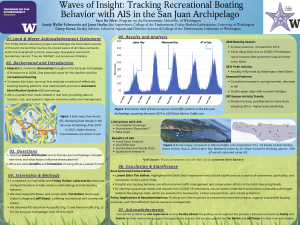Waves of Insight: A Methodology for Tracking Recreational Boating Patterns and Significance in the San Juan Archipelago
Seagrass throughout San Juan Island is experiencing a critical decline largely attributed to anthropogenic influences. Recreational boating emerges as a potential factor that contributes to the decreasing abundance of seagrass habitats. To begin evaluating the impact of boating on seagrass health, we first need to understand boating patterns in the region. This study aimed to develop a methodology for analyzing recreational boating behavior in the San Juan Islands. During my internship with Friday Harbor Labs, I used Automatic Identification System (AIS) data to create a methodology that can systematically track vessel activity across seven key bays from 2018 to 2023, complemented by extensive literature reviews. The research focused on understanding patterns in boating traffic, including vessel size and AIS usage across different locations and periods. In addition to the quantitative analysis, the study integrated qualitative insights from a Lummi elder, emphasizing the cultural significance of these waters, along with perspectives from recreational boaters which emphasized their engagement with the marine environment. The results indicated a low correlation between boats present in the bays and those with AIS turned on. However, the study also identified valuable benefits of using AIS data, such as cost-effectiveness and the ability to perform spatiotemporal analysis over five years. Understanding the spatial distribution and intensity of recreational boating activities is crucial for developing strategies to mitigate their environmental impacts on seagrass in the Salish Sea.
